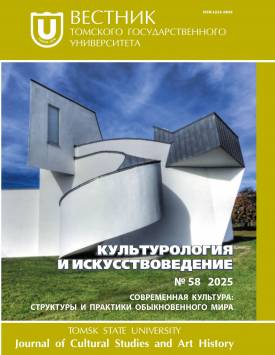Peculiarities of the process of russian film production (1989–2024)
One of the consequences of the changes in the social life of the Soviet Union that began in 1985 was a change in the aesthetic and ethical paradigm of Russian cinema. The aesthetics of socialist realism, which limited the thematic and genre spectrum of film production, was replaced by critical realism: new films began to focus on reinterpretation of the recent and distant past and harsh depiction of the present. The heroes of the pictures are increasingly becoming criminals, asocial and marginalized individuals who evoke neither sympathy nor compassion of the viewer. It is not surprising that soon the interest of movie audiences to this kind of pictures, popularly known as “blackness”, begins to fall. The accompanying circumstances contributing to the loss of the communicative appeal of Russian films were the absence of protectionist measures aimed at supporting national cinematography in a free market, as well as the unregulated flow of Hollywood products that have displaced domestically produced films. The article explores the complex of reasons why the protracted crisis of the domestic film industry has been going on for three decades. One of the main reasons for this phenomenon is that, according to the new “film production model,” the structure of film studios, which had been a single production and creative complex, was destroyed. The new numerous creative studios, which had no experience in realizing film productions, went bankrupt after a while, as they began to make films that were unable to arouse the interest of the audience. It was at this time that there was a sharp division of cinema into films for mass audiences (with the authors having absolutely no sense of audience expectations) and “author's films” for festival audiences. A significant reason for the change in the aesthetic and ethical paradigm of post-Soviet cinema was the worldview factor. The idea that any problematic film is better than any entertaining film, which was cultivated by film critics back in Soviet times, being realized, led to the creation of films dominated by denial and bleak realism. This was partly a generational factor - young directors were looking for new themes and new screen images. However, the main thing was the change in the artists' worldview, which was permeated with pessimism and skepticism, which led to the final breakdown of contact between the audience and domestic cinema. Since the 2000s, producers have made attempts to create genre cinema, but they have been largely unsuccessful. The most successful films have been those created in the fantasy and fairy tale genres, as well as films about past achievements in sports, science, and technology. The problem of national identity remains significant, since the dramaturgical models and visual images of Russian films are influenced by Hollywood products, as well as the problem of creating auteur films that are of interest to large audiences. The author declares no conflicts of interests.
Keywords
cinema and the audience, post-soviet cinema, Russian films, cultural globalization, mass culture, auteur cinemaAuthors
| Name | Organization | |
| Poznin Vitaly F. | Russian Institute of Art History | poznin@mail.ru |
References

Peculiarities of the process of russian film production (1989–2024) | Tomsk State University Journal of Cultural Studies and Art History. 2025. № 58. DOI: 10.17223/22220836/58/9
